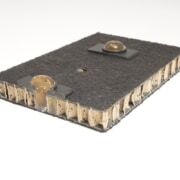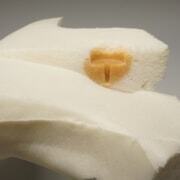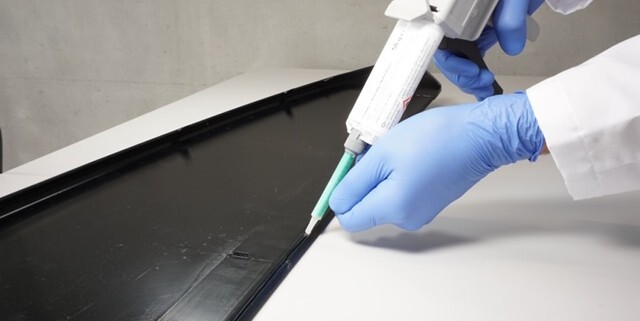Polyurea adhesive – A fast curing structural adhesive
Polyurea adhesive challenges traditional bonding systems in vehicle assembly
In vehicle assembly, fast curing structural adhesive systems are crucial as they increase the production speed and efficiency of the process as well as providing the finished vehicles with several benefits. Lately, the automotive industry has been shaken by the entry of a new, revolutionary system – polyurea adhesive – which is likely to become a wanted alternative to polyurethane and other structural adhesives, which vehicle assembly lines currently rely on. The new polyurea adhesive is elastic and cures extremely fast in room temperature, contributes to significant vehicle weight reduction and remarkably increases overall efficiency while reducing operational costs.
What makes polyurea adhesive unique and even more appealing to the automotive industry is its elasticity and ability to bond dissimilar materials, including lightweight composites as well as its suitability for manual and fully automated application depending on the available equipment and the type of adhesive formulation.
Vehicle assembly applications for polyurea adhesive
Although polyurea adhesive is something new and revolutionary, polyurea chemistry has been known for longer in the form of fast curing coatings. Now, that the chemistry has been modified to serve as fast curing structural adhesives, polyurea has got many new applications. In vehicle assembly these include for example the following.

- Structural bonding of fasteners on molds
The fast curing polyurea adhesive allows for applying fasteners to thin walled components. This enables maximum design freedom and eliminates the chance for material distortion. - Bonding lightweight components
Local reinforcement and bonding of lightweight materials is possible with the new adhesive as it can be automatically injected into the materials, strengthening them and allowing for fasteners to be attached, increasing their shock absorption ability and contributing to weight and cost optimization. - Local reinforcement of PU foam
For reinforcement purposes, the fast curing structural adhesive can be injected into porous materials such as PU foam. The foam absorbs the polyurea glue which cures within 2-4 seconds. This casting process eliminates the need for hard parts before the foaming process. The adhesive is also suitable for fiberboard reinforcement in furniture making.
In reality, the range of possible applications is much wider, as the polyurea adhesive can be applied through manual and automatic equipment or even injection. Contact us for more information about the possibilities!
Benefits that make polyurea adhesive an alternative to polyurethane
The polyurea and polyurethane share some benefits such as curing in challenging environments, suitability to numerous materials, watertight nature, wide operating temperature range and stress absorption and vibration damping. However, some of these properties are enhanced in the new polyurea structural adhesive, and a range of other benefits is brought along.

- Fast curing: one of the most important advantages of polyurea adhesive is its ability to cure in no more than 2 seconds. This shortens cycle times and reduces costs.
- Lower energy consumption: as the adhesive is able to cure at room temperature in a matter of seconds, no additional heat source is needed, which reduces the energy consumption of the process.
- One adhesive for many applications and methods: the polyurea adhesive is versatile as it can be a part of fully automated application machinery or applied manually using a cartridge. Also injection is possible.
- Durability and comfort of vehicles: the elasticity of the fast curing structural adhesive guarantees durable bonds which are not affected by stress and vibration. The adhesive even damps noise and vibration.
- Heat resistance: contributing to longevity and a broad range of application possibilities, polyurea is resistant to extreme temperatures: the operating temperature range is between -40°C and 200°C, the maximum exceeding the temperature given for polyurethane.
- Supports the use of lightweight materials: as polyurea adhesive bonds dissimilar materials including different composites, and strengthens weak materials a wider range of lightweight materials and their applications can be introduced to vehicle assembly.
- Reduced costs: the new adhesive reduces costs in different ways; material costs are lower as less adhesive is needed to guarantee strong bonds: compared to polyurethane, the amount of adhesive needed can be reduced by up to 50%. Labor costs are reduced, too, since the polyurea based adhesive cures fast and allows for automation. Finally, increased efficiency and shorter cycle times decrease the production costs per vehicle.
- Modification: even though the adhesive is based on a specific chemistry, it is not just one type of adhesive, but it can be modified in terms of elasticity, adhesion profile and final strength.
Curious about the details of this fast curing structural adhesive?
In case this new, revolutionary fast curing structural adhesive has made you curious about the opportunities it could offer your processes, do not hesitate to contact us. We are happy to provide you with more information about polyurea adhesives, connect any enquiries with the supplier as well as discuss training and implementation support.
Get connected with the polyurea adhesive manufacturer by hitting the button below!




Leave a Reply
Want to join the discussion?Feel free to contribute!